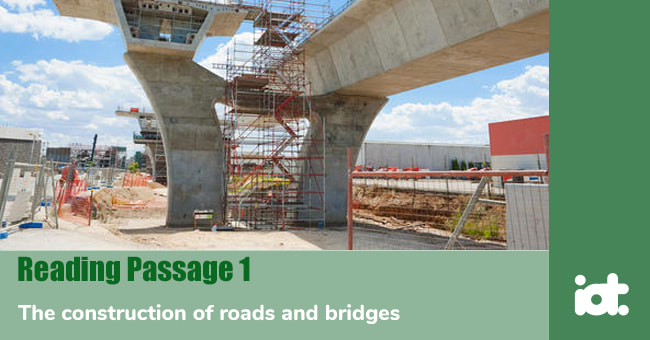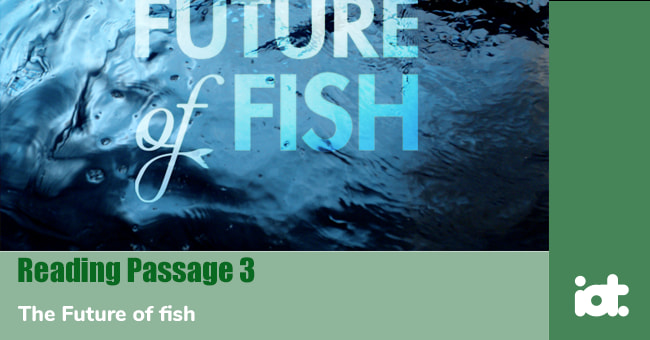
IELTS Practice Tests Plus Volume 3
- 发布时间: 14 Dec 2017
- 模考人次: 446,385
正确答案:
Part 1: Question 1 - 13
- 1 hot tar
- 2 five centimetres/5 cm
- 3 water
- 4 FALSE
- 5 NOT GIVEN
- 6 TRUE
- 7 NOT GIVEN
- 8 Romans
- 9 stone
- 10 light
- 11 longest
- 12 steel
- 13 stable
- 1 hot tar
- 2 five centimetres/5 cm
- 3 water
- 4 FALSE
- 5 NOT GIVEN
- 6 TRUE
- 7 NOT GIVEN
- 8 Romans
- 9 stone
- 10 light
- 11 longest
- 12 steel
- 13 stable
Part 2: Question 14 - 26
- 14 C
- 15 B
- 16 A
- 17 C
- 18 A
- 19 D
- 20 B
- 21 G
- 22 A
- 23 E
- 24 interbreeding
- 25 growth
- 26 little-finger bone
- 14 C
- 15 B
- 16 A
- 17 C
- 18 A
- 19 D
- 20 B
- 21 G
- 22 A
- 23 E
- 24 interbreeding
- 25 growth
- 26 little-finger bone
Part 3: Question 27 - 40
- 27 YES
- 28 YES
- 29 NO
- 30 NOT GIVEN
- 31 NO
- 32 D
- 33 C
- 34 A
- 35 B
- 36 F
- 37 D
- 38 I
- 39 H
- 40 C
- 27 YES
- 28 YES
- 29 NO
- 30 NOT GIVEN
- 31 NO
- 32 D
- 33 C
- 34 A
- 35 B
- 36 F
- 37 D
- 38 I
- 39 H
- 40 C
排行榜:
| # | 用户 | 得分 | 时间 | |
|---|---|---|---|---|
| Isha Shah |  | 9.0 | 15:55 | |
| Nguyễn Xuân Khoa |  | 9.0 | 16:06 | |
| An Nguyen |  | 9.0 | 17:29 | |
| 4 | Louis Le |  | 9.0 | 19:42 |
| 5 | THUY TIEN TRAN NGOC |  | 9.0 | 20:10 |
| 6 | Harmandeep Singh |  | 9.0 | 20:50 |
| 7 | Le Hai Quang |  | 9.0 | 22:56 |
| 8 | Linh Thuy Pham |  | 9.0 | 23:42 |
| 9 | Nguyen Thi Tra My |  | 9.0 | 23:44 |
| 10 | Bùi Hữu Bảo |  | 9.0 | 24:59 |
提高雅思成绩的小贴士

Changes to the IELTS Listening Exam – January 2020
Starting from January 4th this year, Cambridge have made THREE changes to the paper-based Listening test format.
详细试卷答案解析:
Questions 1-3
Label the diagram below.
Choose NO MORE THAN TWO WORDS AND/OR A NUMBER from the passage for each answer.

1
2
3
- 1 Answer: hot tar
Keywords in Questions
Passage(s) that give(s) the answer.
Q1. Tarmacadam _____ and stone chips)
McAdam’s surface layer - hot tar onto which a layer of stone chips was laid - became known as ‘tarmacadam’, or tarmac.
We can draw from the title of the diagram (Flexible Pavement) that the information we need is in the third paragraph: “Roads of this kind were known as flexible pavements”.
The text described “tarmacadam” as the surface layer of a road which is formed by pouring “hot tar” onto stone chips. Thus, the answer for question 1 is “hot tar”.
- 2 Answer: five centimetres/5 cm
Keywords in Questions
Passage(s) that give(s) the answer.
Q2. Middle layer ( _____ deep)
stone dust mixed with water was added, and which was compacted to a thickness of just five centimetres , and then rolled
We can draw from the title of the diagram (Flexible Pavement) that the information we need is in the third paragraph: “Roads of this kind were known as flexible pavements”.
The diagram shows that the middle layer is right above the foundation. Based on this, we can easily find information for question 2 and 3: “from a properly prepared and well-drained foundation. Immediately above this…”
The middle layer was described to be five centimetres thick: “ which was compacted to a thickness of just five centimetres”. Since it’s underneath the surface layer and on the ground, we can also rephrase it as “five centimetres” deep.
- 3 Answer: water
Keywords in Questions
Passage(s) that give(s) the answer.
Q3. Crushed stone dust and ______
John McAdam (1756-1836) typically laid crushed stone, to which stone dust mixed with water was added
We can draw from the title of the diagram (Flexible Pavement) that the information we need is in the third paragraph: “Roads of this kind were known as flexible pavements”.
The diagram shows that the middle layer is right above the foundation. Based on this, we can easily find information for question 2 and 3: “from a properly prepared and well-drained foundation. Immediately above this…”
The middle layer consists of three components: crushed stone, stone dust, and water. Therefore, the answer for question 3 is “water”.
Questions 4-7
Do the following statements agree with the information given in Reading Passage 1 ?
Write
| TRUE | if the statement agrees with the information |
| FALSE | if the statement contradicts the information |
| NOT GIVEN | If there is no information on this |
4 Road construction improved continuously between the first and eighteenth centuries.
5 In Britain, during the nineteenth century, only the very rich could afford to use toll roads.
6 Nineteenth-century road surfaces were inadequate for heavy motor traffic.
7 Traffic speeds on long-distance highways were unregulated in the early part of the twentieth century.
- 4 Answer: FALSE
Keywords in Questions
Passage(s) that give(s) the answer.
Q4. Road construction improved continuously between the first and eighteenth centuries.
At the peak of the Roman Empire in the first century ad, Rome had road connections totalling about 85,000 kilometres.
New roads were generally of inferior quality.
achievements of Roman builders were largely unsurpassed until the resurgence of road-building in the eighteenth century.
If road construction did improve continuously, newer roads should be better than the ones built before it, including the ones by the Romans in the first century.
However, the roads built by the Romans in the first century:
“Roman Empire in the first century ad, Rome had road connections totalling about 85,000 kilometres ”
remained to be the best roads until the eighteenth century:
“were largely unsurpassed until the resurgence in the eighteenth century”.
Newer roads during this period were not as good:
“New roads were generally of inferior quality ”.
Therefore, the statement is “FALSE”.
- 5 Answer: NOT GIVEN
Keywords in Questions
Passage(s) that give(s) the answer.
Q5. In Britain, during the nineteenth century, only the very rich could afford to use toll roads.
men such as John McAdam and Thomas Telford had created a British road network totalling some 200,000 km, of which about one sixth was privately owned toll roads called turnpikes.
As we can easily see here, the only information regarding toll roads is:
Their name: “called turnpikes”
The proportion they accounted for: “about one sixth…”
And that they were privately owned.
The writer didn’t mention how much were the fees to use these toll roads. Therefore, we can’t conclude that only the rich could afford to use toll roads. It is “NOT GIVEN”.
- 6 Answer: TRUE
Keywords in Questions
Passage(s) that give(s) the answer.
Q6. Nineteenth-century road surfaces were inadequate for heavy motor traffic.
In the twentieth century, the ever-increasing use of motor vehicles threatened to break up roads built to nineteenth-century standards,
Word/Term Explanation: ever-increasing: constantly increasing, continuously increasing.
Word/Term Explanation: inadequate: not sufficient, not good enough.
Connecting the keywords, we can see it’s a paraphrase of the statement: ever-increasing use of motor vehicles break up roads built to nineteenth-century standards.
The statement is “TRUE”.
- 7 Answer: NOT GIVEN
Keywords in Questions
Passage(s) that give(s) the answer.
Q7. Traffic speeds on long-distance highways were unregulated in the early part of the twentieth century.
The demands of heavy traffic led to the concept of high-speed, long-'distance roads , with access - or slip-lanes - spaced widely apart. The US Bronx River Parkway of 1925 was followed by several variants - Germany’s autobahns and the Pan American Highway. Such roads - especially the intercity autobahns with their separate multi-lane carriageways for each direction - were the predecessors of today’s motorways. .
Word/Term Explanation: “high-speed, long distance roads” is another way to call “long-distance highways”.
Therefore, we know this is the paragraph providing us with the information we need.
From the text, the only information about highways is:
They became necessary since road traffic had increased dramatically: “The demands of heavy traffic led to the concept of high-speed, long-'distance roads”.
Examples of highways and their features :
“The US Bronx River Parkway of 1925”
“Germany’s autobahns and the Pan American Highway”
“the intercity autobahns with their separate multi-lane carriageways for each direction”.
Therefore, the answer is “NOT GIVEN”
Questions 8-13
Complete the table below.
Use ONE WORD ONLY from the passage for each answer.
Bridges
|
- 8 Answer: Romans
Keywords in Questions
Passage(s) that give(s) the answer.
Q8. Introduced by the _______
The development by the Romans of the arched bridge marked the beginning of scientific bridge-building .
“Introduced by the Romans” and the “the Romans marked the beginning” can be both interpreted as: the Romans were the first to create/make/develop arched bridges.
- 9 Answer: stone
Keywords in Questions
Passage(s) that give(s) the answer.
Q9. Usually made of _______
arched bridges are very strong. Most were built of stone , but brick and timber were also used .
“made of” and “built of“ are synonym, and since we know the answer is the “usual“ material, it should be stone, not brick or timber.
- 10 Answer: light
Keywords in Questions
Passage(s) that give(s) the answer.
10. Strong but _______
Such bridges are nevertheless light .
Because the previous part of this paragraph specified what it takes to make a suspension bridges strong :
It requires strong anchorage at each end to resist the inward tension ,
the deck is strengthened to control distortion .
The sentence can be interpreted as: “Such bridges (suspension bridges) are strong but nevertheless/but still/yet light.
- 11 Answer: longest
Keywords in Questions
Passage(s) that give(s) the answer.
Q11. Akashi Kaikyo, Japan (currently the _______ span)
The 1998 Akashi Kaikyo Bridge in Japan has a span of 1,991 metres, which is the longest to date
This question is quite straightforward. The only information provided for Akashi Kaikyo bridge is that it has the “longest” span.
- 12 Answer: steel
Keywords in Questions
Passage(s) that give(s) the answer.
Q12. Made of ______
Cantilever bridges, such as the 1889 Forth Rail Bridge in Scotland, exploit the potential of steel construction to produce a wide clearwater space .
Question 12 asks for the material that cantilever bridges are made of.
Word/Term Explanation: “exploit the potential of steel” in this context (construction) means “to use steel as the main material to build the bridge and benefit from steel properties (strong, durable,),
This has the same meaning as “made of”. Therefore, we know the answer is “steel”.
- 13 Answer: stable
Keywords in Questions
Passage(s) that give(s) the answer.
Q13. More _____ than the suspension bridge.
Although the suspension bridge can span a wider gap, the cantilever is relatively stable
Word/Term Explanation: “relatively” is used when you want to make a statement about something compared to something else. It’s another way to say “more than” or “less than”
The suspension bridges even though can stretch longer, they are less stable than the cantilevers. The correct answer is “stable”.
READING PASSAGE 1
You should spend about 20 minutes on Questions 1-13, which are based on Reading Passage 1 below.

The construction of roads and bridges
Roads
Although there were highway links in Mesopotamia from as early as 3500 bc, the Romans were probably the first road-builders with fixed engineering standards. At the peak of the Roman Empire in the first century ad, Rome had road connections totalling about 85,000 kilometres.
Roman roads were constructed with a deep stone surface for stability and load-bearing. They had straight alignments and therefore were often hilly. The Roman roads remained the main arteries of European transport for many centuries, and even today many roads follow the Roman routes. New roads were generally of inferior quality, and the achievements of Roman builders were largely unsurpassed until the resurgence of road-building in the eighteenth century.
With horse-drawn coaches in mind, eighteenth-century engineers preferred to curve their roads to avoid hills. The road surface was regarded as merely a face to absorb wear, the load-bearing strength being obtained from a properly prepared and well-drained foundation. Immediately above this, the Scottish engineer John McAdam (1756-1836) typically laid crushed stone, to which stone dust mixed with water was added, and which was compacted to a thickness of just five centimetres, and then rolled. McAdam’s surface layer - hot tar onto which a layer of stone chips was laid - became known as ‘tarmacadam’, or tarmac. Roads of this kind were known as flexible pavements.
By the early nineteenth century - the start of the railway age - men such as John McAdam and Thomas Telford had created a British road network totalling some 200,000 km, of which about one sixth was privately owned toll roads called turnpikes. In the first half of the nineteenth century, many roads in the US were built to the new standards, of which the National Pike from West Virginia to Illinois was perhaps the most notable.
In the twentieth century, the ever-increasing use of motor vehicles threatened to break up roads built to nineteenth-century standards, so new techniques had to be developed.
On routes with heavy traffic, flexible pavements were replaced by rigid pavements, in which the top layer was concrete, 15 to 30 centimetres thick, laid on a prepared bed. Nowadays steel bars are laid within the concrete. This not only restrains shrinkage during setting, but also reduces expansion in warm weather. As a result, it is, possible to lay long slabs without danger of cracking.
The demands of heavy traffic led to the concept of high-speed, long-'distance roads, with access - or slip-lanes - spaced widely apart. The US Bronx River Parkway of 1925 was followed by several variants - Germany’s autobahns and the Pan American Highway. Such roads - especially the intercity autobahns with their separate multi-lane carriageways for each direction - were the predecessors of today’s motorways.
Bridges
The development by the Romans of the arched bridge marked the beginning of scientific bridge-building; hitherto, bridges had generally been crossings in the form of felled trees or flat stone blocks. Absorbing the load by compression, arched bridges are very strong. Most were built of stone, but brick and timber were also used. A fine early example is at Alcantara in Spain, built of granite by the Romans in AD 105 to span the River Tagus. In modern times, metal and concrete arched bridges have been constructed. The first significant metal bridge, built of cast iron in 1779, still stands at Ironbridge in England.
Steel, with its superior strength-to-weight ratio, soon replaced iron in metal bridge-work. In the railway age, the truss (or girder) bridge became popular. Built of wood or metal, the truss beam consists of upper and lower horizontal booms joined by vertical or inclined members.
The suspension bridge has a deck supported by suspenders that drop from one or more overhead cables. It requires strong anchorage at each end to resist the inward tension of the cables, and the deck is strengthened to control distortion by moving loads or high winds. Such bridges are nevertheless light, and therefore the most suitable for very long spans. The Clifton Suspension Bridge in the UK, designed by Isambard Kingdom Brunei (1806—59) to span the Avon Gorge in England, is famous both for its beautiful setting and for its elegant design. The 1998 Akashi Kaikyo Bridge in Japan has a span of 1,991 metres, which is the longest to date.
Cantilever bridges, such as the 1889 Forth Rail Bridge in Scotland, exploit the potential of steel construction to produce a wide clearwater space. The spans have a central supporting pier and meet midstream. The downward thrust, where the spans meet, is countered by firm anchorage of the spans at their other ends. Although the suspension bridge can span a wider gap, the cantilever is relatively stable, and this was important for nineteenth-century railway builders. The world’s longest cantilever span - 549 metres - is that of the Quebec rail bridge in Canada, constructed in 1918.





